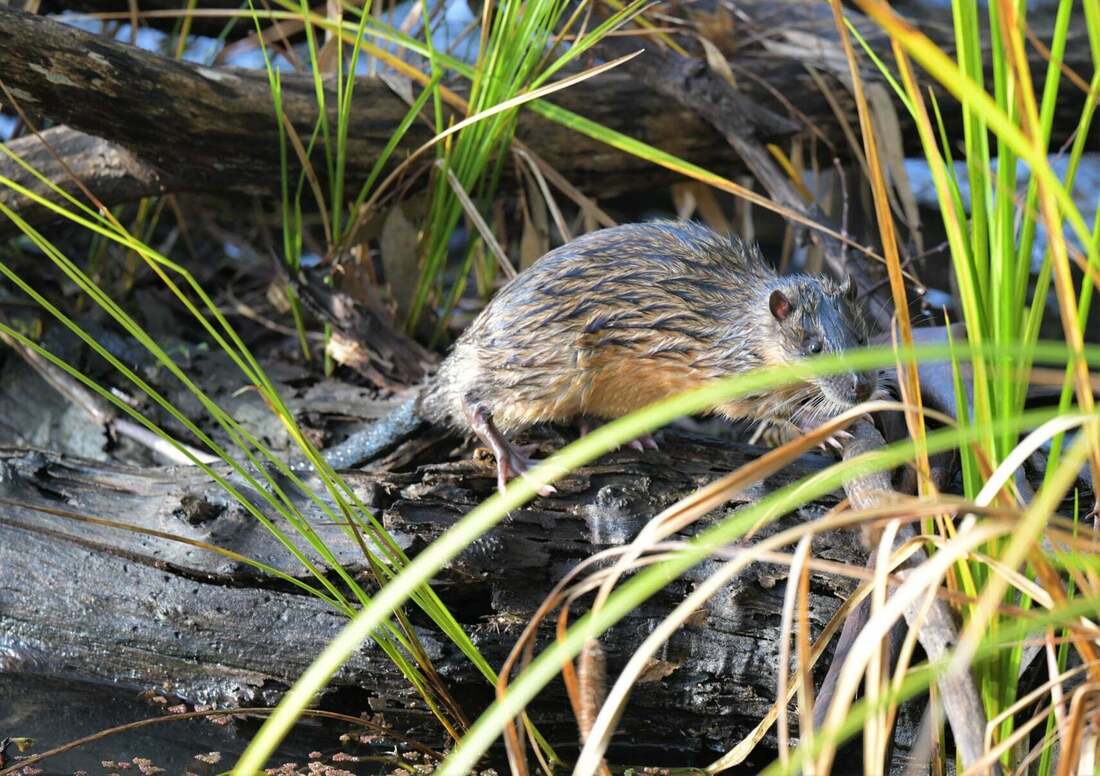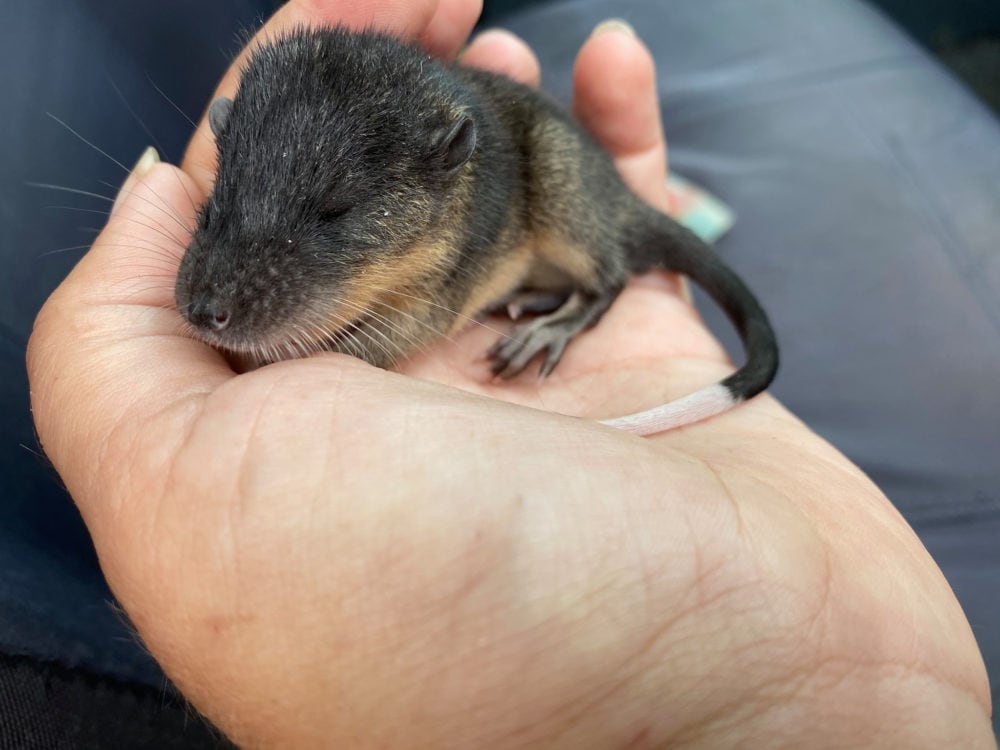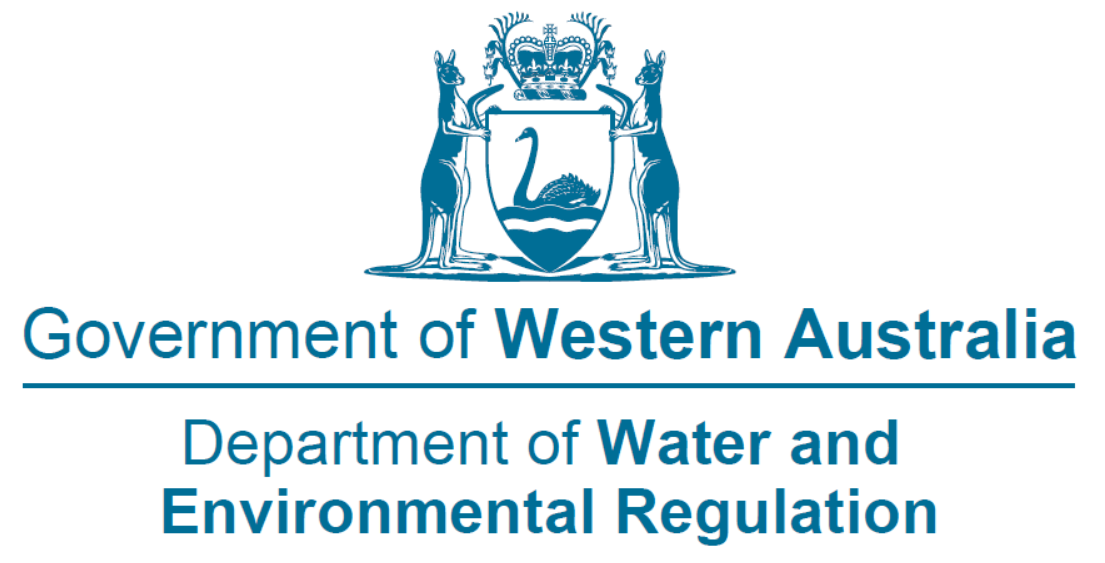Australia supports a diverse array of native rodents that have been a part of the local landscape for several million years. The largest of these is the Rakali- Hydromys chrysogaster.
Sadly misunderstood by many Australians due to being referred to as a water rat as many think of rats as dirty and diseased or introduced to Australia when in fact Australia has many beautiful native rodents. A push in the early 90’s by the federal government for a name change from Australian Water Rat to Rakali – the name used by the Ngarrindjeri aboriginal people in the lower Murray River and Coorong region of South Australia. sometimes called Australia’s otter. Other names for this species include Moytj in Nyoongar, golden-bellied water mouse/rat, rabe, and beaver rat, all of which are the same species.
Sadly misunderstood by many Australians due to being referred to as a water rat as many think of rats as dirty and diseased or introduced to Australia when in fact Australia has many beautiful native rodents. A push in the early 90’s by the federal government for a name change from Australian Water Rat to Rakali – the name used by the Ngarrindjeri aboriginal people in the lower Murray River and Coorong region of South Australia. sometimes called Australia’s otter. Other names for this species include Moytj in Nyoongar, golden-bellied water mouse/rat, rabe, and beaver rat, all of which are the same species.
The Rakali is one of the few amphibious mammals found in Australia. They live a semi-aquatic and semi-nocturnal lifestyle and hunt for most of their food in the water or on the water’s edge eating a large variety of prey including fish, frogs, shellfish, crustaceans, aquatic insects, carrion, food scraps even mice, lizards, and bats!
They have cute features such as a flattish head, a short stubby nose and white-tipped tail. With a dense number of whiskers, used for hunting they appear to always be overdue for a shave. With waterproof fast-drying thick fur, partially webbed hind feet, dorsally located nostrils, and small ears that can be flattened against the body, it makes them perfect for their aquatic lifestyle. (They can probably swim better than most Olympic swimmers.)
They occupy a variety of freshwater and brackish habitats around Australia and its islands, including swamps, lakes, rivers, creeks, estuaries, sheltered ocean beaches, and irrigation channels opting for areas with thick cover. See distribution map
They have cute features such as a flattish head, a short stubby nose and white-tipped tail. With a dense number of whiskers, used for hunting they appear to always be overdue for a shave. With waterproof fast-drying thick fur, partially webbed hind feet, dorsally located nostrils, and small ears that can be flattened against the body, it makes them perfect for their aquatic lifestyle. (They can probably swim better than most Olympic swimmers.)
They occupy a variety of freshwater and brackish habitats around Australia and its islands, including swamps, lakes, rivers, creeks, estuaries, sheltered ocean beaches, and irrigation channels opting for areas with thick cover. See distribution map
Weighing between 400 grams to 1.3 kilograms (Males being larger) they are noticeably larger than the invasive black and brown rat and similar in size to a medium-sized platypus. For those of you living in fear of other rodent species be assured these fellas will protect their territory and fight off these invasive pests. They will not inhabit your roof, shed or house, they much prefer a little burrow near the water.
Their colour varies considerably depending on location and age, the head and back may be any shade of brown through to black, and the underside can be from a golden/yellow shade to fawn/cream. The tail always has a distinctive white tip but don’t mistake it for the ring-tail possum that will occasionally eat some of your garden plants and scurry up a tree.
Their colour varies considerably depending on location and age, the head and back may be any shade of brown through to black, and the underside can be from a golden/yellow shade to fawn/cream. The tail always has a distinctive white tip but don’t mistake it for the ring-tail possum that will occasionally eat some of your garden plants and scurry up a tree.
Conservation Issues and Status
The Rakali is considered to be nationally secure and has an international conservation ranking of “Least Concern”. However, it often occurs in low numbers due to being solitary and highly territorial and is expected be regionally threatened in some places (for example, in south-western Western Australia). Rakali is both an apex predator located near the top of the food chain, and small enough to be hunted by larger predators such as snakes, large fish, birds of prey, foxes, cats and dogs. It also mainly feeds in or near water, so numbers are likely to crash during severe droughts. The practice of lining irrigation channels with plastic as a water-saving measure is also known to have devastating consequences for this species.
Water-rats were once widely trapped for their fur and sometimes culled when they were perceived to be a nuisance in irrigation districts. Today, many drown in enclosed traps set to capture crayfish or crabs in jurisdictions such as South Australia and the Northern Territory where these traps can still be legally deployed. As a wildlife-friendly alternative, anglers can instead capture tasty crustaceans using open-topped lift nets or old-fashioned hookless baited lines.
Australian water-rats sometimes come into conflict with humans when they raid ornamental goldfish ponds, marron farms or poultry yards, kill free-ranging guinea pigs in gardens, steal bait and snacks from anglers, deposit piles of fish bones on the decks of moored yachts, or leave the gory remains of cane-toads near swimming pools. However, killing or relocating water-rats is illegal and can result in hefty fines. In any case, these actions are usually ineffective as a control measure, given that dispersing juveniles are normally quick to recolonise suitable vacant habitat.
A more sustainable solution is to learn to live with these clever and attractive native animals, for example by using netting to exclude water-rats from a fish pond or not leaving out food scraps that attract them.
Rakali can make use of a wide range of artificial water bodies. The Australian Platypus Conservancy has produced a series of guidelines for designing ‘rakali-friendly’ wetlands in the hope that managment agencies and local councils will take advantage of opportunities to make all new artifical water bodies suitable for this species – see guidelinenes for design of rakali-friendly wetlands.
The Rakali is considered to be nationally secure and has an international conservation ranking of “Least Concern”. However, it often occurs in low numbers due to being solitary and highly territorial and is expected be regionally threatened in some places (for example, in south-western Western Australia). Rakali is both an apex predator located near the top of the food chain, and small enough to be hunted by larger predators such as snakes, large fish, birds of prey, foxes, cats and dogs. It also mainly feeds in or near water, so numbers are likely to crash during severe droughts. The practice of lining irrigation channels with plastic as a water-saving measure is also known to have devastating consequences for this species.
Water-rats were once widely trapped for their fur and sometimes culled when they were perceived to be a nuisance in irrigation districts. Today, many drown in enclosed traps set to capture crayfish or crabs in jurisdictions such as South Australia and the Northern Territory where these traps can still be legally deployed. As a wildlife-friendly alternative, anglers can instead capture tasty crustaceans using open-topped lift nets or old-fashioned hookless baited lines.
Australian water-rats sometimes come into conflict with humans when they raid ornamental goldfish ponds, marron farms or poultry yards, kill free-ranging guinea pigs in gardens, steal bait and snacks from anglers, deposit piles of fish bones on the decks of moored yachts, or leave the gory remains of cane-toads near swimming pools. However, killing or relocating water-rats is illegal and can result in hefty fines. In any case, these actions are usually ineffective as a control measure, given that dispersing juveniles are normally quick to recolonise suitable vacant habitat.
A more sustainable solution is to learn to live with these clever and attractive native animals, for example by using netting to exclude water-rats from a fish pond or not leaving out food scraps that attract them.
Rakali can make use of a wide range of artificial water bodies. The Australian Platypus Conservancy has produced a series of guidelines for designing ‘rakali-friendly’ wetlands in the hope that managment agencies and local councils will take advantage of opportunities to make all new artifical water bodies suitable for this species – see guidelinenes for design of rakali-friendly wetlands.
More information
- Celebrate Rakali Awareness Day on 18th February.
- Rakali Fact Sheet
- The Australian Platypus and Rakali Conservancy
We acknowledge the Minang and Koreng people as the traditional custodians of the land on which we work and live. We pay our respects to the Elders, past, present, and emerging and to the wider Noongar community.
Sponsors and Supporters















